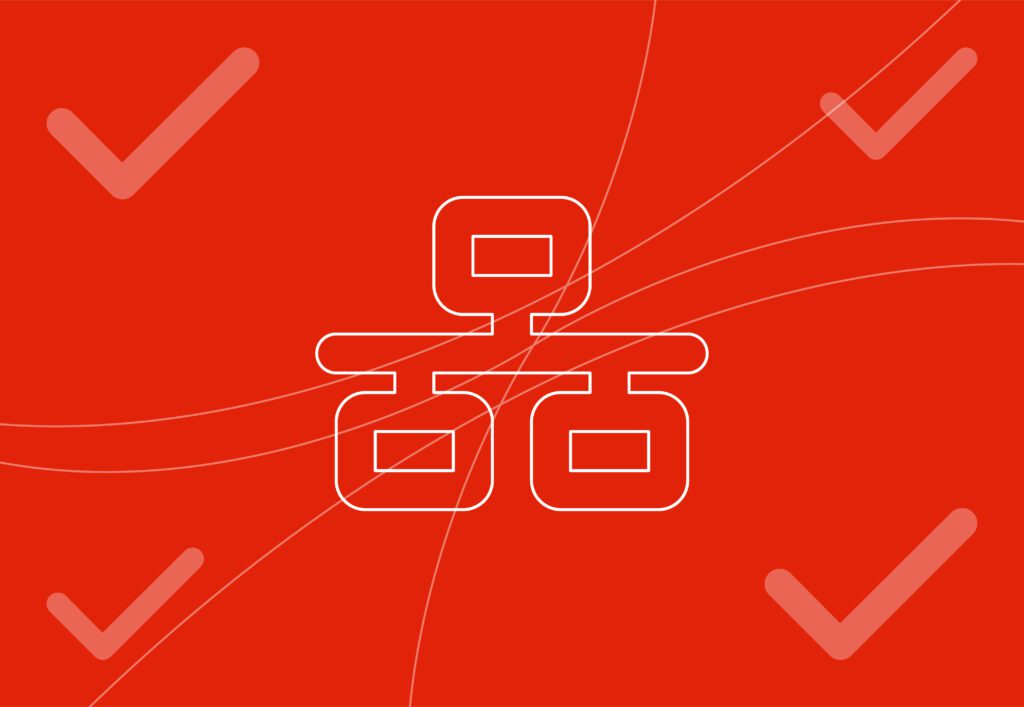
A complete guide to efficient project management

At the nucleus of every project is the project manager. They are the centralised force keeping moving parts aligned, deadlines on course and getting deliverables over the line. They spearhead the project, navigating the usual, the unexpected, and every twist and turn along the way. Being effective in this role isn’t for the faint of heart and requires more than just spinning all the plates. It depends on a harmony of leadership, strategy, adaptability and the perseverance to keep pushing to that final finish line.
Whether you’re great at Gantt charts, brilliant with budgets or adaptable with Agile, the endless pursuit of finding smarter ways to work, avoiding chaos and asking the questions no one else is thinking is what fuels a project manager as they wrap up one project and begin on the next.
Planning
Planning to fail is failing to plan; the age-old saying that probably reminds many of being back in school, wise words from a teacher that may have gone straight over our heads. Fast forward to being a project manager, and planning is at the absolute crux of project success.
All projects start out as an idea, a vision, a goal. It is our job to take it from its earliest form and flesh it out into reality. Turning the intangible into the tangible.
Scoping
- The easiest and most vital time to ask all the questions is at the scoping stage. This is the exciting part where you can gain a deep understanding of the project requirements. I always lead these initial conversations with stakeholders with the ‘why’. Once you have this information, it will greatly influence and correctly establish the ‘what’.
- The clearer the objectives you can establish at this stage, the better aligned everyone is with the same vision and the clearer the project path will be. This is the time for an honest, open exchange of goals and responsibilities, which forms the foundation of the agency-client relationship.
- Define the deliverables following these discussions, whether it’s a product, service, outcome or all of the above. Just as important as defining what will be delivered, it is also important to establish what is not included. It’s called scope creep for a reason, and if exclusions are not properly established in these early stages, something will undoubtedly jump out and scare you further down the line.
- Great minds think alike…and sometimes they don’t. Success looks different to everyone; ROI might be at the top of someone’s list, whilst customer satisfaction might be at the top of someone else’s. Agree on KPIs now, so we’re all shooting for the same goal later. These also help shape the project and can massively help refine the plan for delivery.
Timelines

Time; we’re constantly chasing it, and everybody needs more of it. We all have the same hours in a day, so choosing how to utilise them can be the make-or-break of a project’s success.
In the beginning stages we always have a start date and delivery date. In between this is a blank canvas where project managers make a project more than just words on a scoping document and to bring it into reality.
For larger and complex projects, breaking them down into manageable tasks allows us to see what is needed for each stage of the deliverables. From here, we can suitably assign resources, budget and tools effectively.
Ensure all aspects of the project are factored in, including any internal and client milestones that need to take place. I would always recommend going as granular as possible here, as even a missed task taking a couple of hours could throw the whole thing off later down the line. It’s important to understand the client’s preference on this, however, as they may prefer a more top-level version.
A thoroughly fleshed out timeline can minimise future roadblocks, and allows for mitigating strategies ahead of time for any likely to come up.
Develop a realistic timeline
Timelines need to be realistic. The theory of cutting a day off here and there to make the work fit within certain dates may look great on the Gantt chart, but the reality of it always has to be considered. Unrealistic timelines lead to lower quality of work, burnout among team members and lateness with deadlines.
We all want to deliver high-quality work within a tight deadline when the request comes. Sometimes it’s possible, and the pressure and the challenge can give us an opportunity to shine and work together as a team. Whilst it’s great to be able to do this, we also have to be honest and upfront on those occasions where it’s just not possible. We should always assess requests realistically and follow the advice that it’s better to give bad news early than in the eleventh hour. Communicating at the earliest possible time that something can not be achieved leaves us with options, the opportunity to go with a Plan B, and keeps us in control of the project’s fate.
Communication

Emails. Slack messages. Google Meet calls. We spend most of our days communicating with each other, and everyone has their preference on how they like to share and receive updates. Keeping everyone in the loop is vital to ensure the project is moving forward and in the right direction. As a project manager, you will be a hub of knowledge, collecting information across multidisciplinary teams and then collating and sharing this with the relevant stakeholders.
Always have communication touchpoints plotted into the timeline, both internal and external. These should be shared with the relevant stakeholders in advance, and be regular occurrences with a clear agenda of what is to be covered during the allocated time.
The message delivered should always be clear and concise. Leading these touchpoints with clear objectives will enable fast decision making, improve stakeholder engagement and lead to project success and satisfaction. Unclear, unstructured touch points lead to confusion, uncertainty and everyone involved may come away with different, unaligned outcomes.
Communication preferences should always be considered. Perhaps a client is required to travel regularly, where a phone call as opposed to a video call would be the most suitable and appropriate, or there are hybrid working arrangements to be considered, where forward planning to arrange a touchpoint when all the relevant team members are in the office needs to be arranged.
Great communication can lead to many positive outcomes. For one, it sets clear expectations for everyone involved in the project, ensuring every team member understands objectives, roles and responsibilities. If they feel confident with all of these, this will only lead to high-quality work, in line with the brief. Poor communication can result in a breakdown of trust and lead to misalignment in goals. As important as the project is, a positive client relationship is paramount.
Execution
The planning is in place, the people are in place; now it’s time to put both into action. All previous work done by the project manager now provides the foundation as we move forward into the execution stage. This is where our skilful team undertake their responsibilities, and we move into a collaborative workflow.
Time management
– It’s not enough to just have the work scheduled in, the project manager must make sure the team are clear on their responsibilities and roles when they begin working on a project. They should be aware of any deadlines and know exactly when they are expected to deliver. Any potential delay they foresee in meeting these deadlines should be communicated with the project manager as soon as possible. The timeline is usually built on task dependencies and one setback can cause a domino effect that ripples through.
– Contingency time must always be considered and factored in. Human error and technical errors will always occur. That isn’t necessarily the issue; the issue is not having buffer time to mitigate these situations. Where possible, allow tasks some breathing room; it’s better to have it and not need it than to need it and not have it. Just knowing it is there takes the pressure off the team, which leads to higher quality output of work, which results in less contingency time needed. If it’s not needed, the project runs ahead of schedule as you near that ever-closing delivery date, which everyone is always happy to hear.
Progress tracking
This will be a daily, even hourly check-in. It is imperative to constantly and consistently check the progress of a project, measuring the performance against the scope of work, timeline, budget, deliverables and KPIs.
– The method of project tracking will always lead to great insights, which will help to more accurately shape future projects. Maybe a process needs to be refined, more time allocated for a task or a slight increase in cost to cover an unforeseen roadblock; these are all valuable learnings that can be gleaned from progress tracking.
Delivery and closure
The end is in sight but it’s not time to take the foot of the pedal yet. It’s easy to feel the pressure ease off, but this is a dangerous time to take your eye off the ball and allow complacency to creep in. Instead, this is the time to keep focused on delivering in full and on time.
Final internal quality checks are essential before any projects can be considered complete. The work produced on a project is always going to be a reflection of you and your company and, once handed over to the client, will also be a reflection of them and their company. This stage should be used as a final opportunity to capture any inconsistencies, and a great time to confirm we are proud of the work we have produced before handing it over to the stakeholders.
– Now it’s over to the client. It’s almost the drumroll moment of the project, where we present the finished product for review. Receiving client approval isn’t just a box-ticking exercise; it’s confirmation that the work we have produced provides value, and has fulfilled the requests from the ‘what’ and ‘why’ at the start of the project. Be prepared for some final feedback at this stage, and it is always a good idea to run through the agreed deliverables to ensure the client is satisfied all have been executed. The KPIs are also useful here, as this reinstates the project’s purpose going forward.
– There should always be time for celebration and recognition at the close of a project. It is a collaborative, combined effort of skills and input, from many different people across many different teams, to produce the final product. Time during a project can move by so fast, and it’s important to acknowledge all the contributions made.
– Whether a project has gone perfectly well or hit some snags along the way, a post-launch review and evaluation is always recommended. It is just as important to recognise what went well as well as what could have gone better. It should never be a judgement, or a blame game, but rather a list of learnings to take into the next project. If we are learning, we are growing.
And there we have it, a complete guide to project management, from inception to delivery and everything in between. There are of course specific methodologies of Project Management that should be mentioned, such as the traditional method, Waterfall, or the more flexible approach of Agile. Although some may not use any specific method at all. There will always be nuances in how every project manager runs a project; it’s what keeps us evolving and open to discovering new methodologies.
However, at its heart, there are always the integral core foundations and pillars mentioned in this blog that run through all of our work. I’ve heard it said many times that being a project manager can be likened to a conductor for an orchestra, collaborating with many different people and always striving to have everyone working together in harmony!



